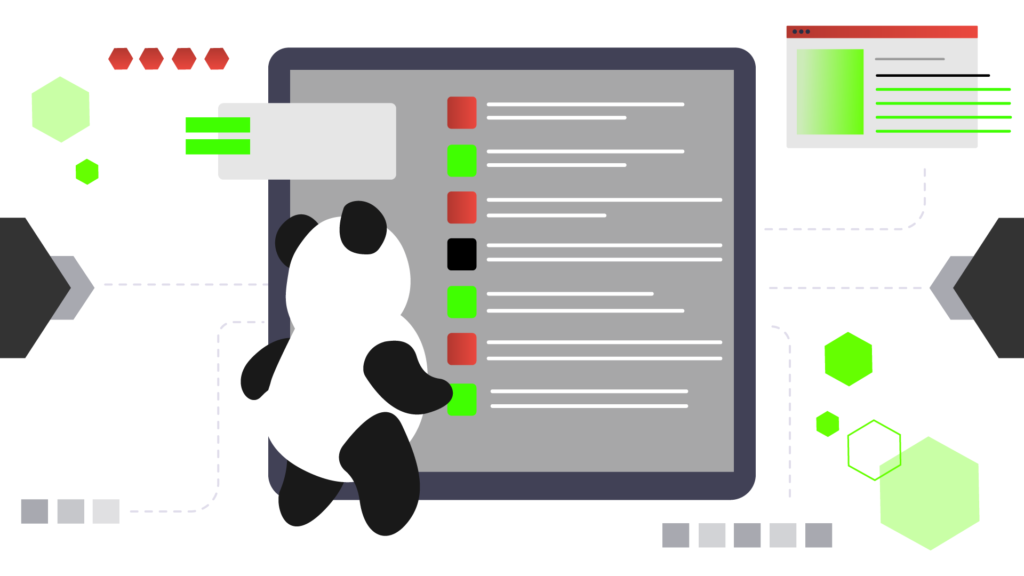Google Panda

The Google search engine has a number of algorithms that greatly affect the promotion of sites in search engines. Thanks to Google Panda, the users see the content that most closely matches their requests and do not waste time browsing the resources that are created for aggressive SEO promotion.
How Google Panda’s algorithm works
The complex is necessary to combat low-quality information on web resources, therefore, the main criteria for them are based on the quality of the displayed content:
- You cannot use auto-generated texts;
- Site visitors and web spiders must see the same thing: it is forbidden to create pages that are visible only to search engines and serve to promote the project;
- Advertising blocks and links on the pages must be selected according to the subject of the site and individual text;
- Content should be unique, without other people’s pictures and duplicate text;
- Do not use doorways, hidden passages of text or links, the task of which is to deceive the search engine;
- Key phrases must match the text on the pages, overspam is not allowed.
In addition, Google Panda pays attention to behavioral factors. If a web resource has a large churn of visitors and bounce rate, users leave it almost immediately, then the project will certainly get on the radar of the algorithm.
How to Avoid Panda Penalty
Not to get hit by Panda it is necessary to use only unique articles with an originality rate of at least 90-95%. It is forbidden to oversaturate texts with keywords, for 500-700 characters it is enough to embed one query. The site should not have duplicate pages, otherwise it is necessary to close duplicates from indexing, use the tags “canonical” or “next prev”, and if the pages completely repeat each other – put a redirect. Working on content has a positive effect on website promotion, the main thing is not to overdo it with over-optimizing text and images.
How to Recover from Google Panda
To remove the sanctions, you will have to do the following:
- Cleanse the project from aggressive and inappropriate advertising, which will significantly improve behavioral factors. As users don’t like being greeted with a lot of annoying advertisement you can remove ads at the top of the page and leave it only on the sidebar;
- Conduct a full-fledged content check-up and replace non-unique articles with interesting and informative ones. You can, for example, go to Google Analytics to sort your pages by their views and get rid of pages with little traffic and thin content;
- Get rid of broken links and duplicates, remove highlighting from key phrases. Google Webmaster Tools (GWT) can be your best friend in this case. It will help you to identify broken links, crawling or indexation errors, duplicate meta descriptions or titles and other website problems. CopyScape service may help to find duplicate content;
- Remove keywords excess from all titles and meta tags. Make the headings pleasant and relevant, so that after reading them, a visitor of the site would like to read the article;
- Check all links for compliance with the content of the pages and remove unnecessary and inappropriate. The site can lose ranking and reputation if it links to very bad sites. Especially if it is linking to websites that are punished by Google;
- Look for spelling and grammar mistakes to correct them.
Thanks to these points, there will be a chance to remove the site from the Google Panda filter. It is worth remembering that this is an automatic algorithm and written requests will not help to remove the sanctions. It is enough to fill the site with exciting and original content so that people themselves put natural links to it, recommending it to other Internet users. It is also recommended to use as little advertising as possible on the site pages. Then Panda will pass by and not affect the resource.